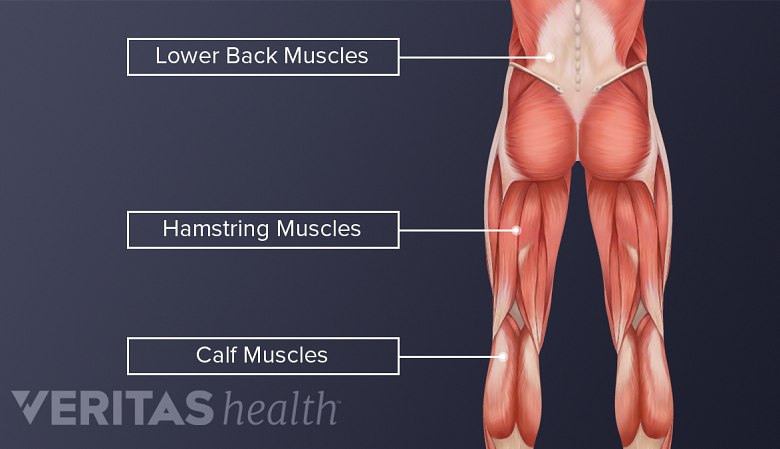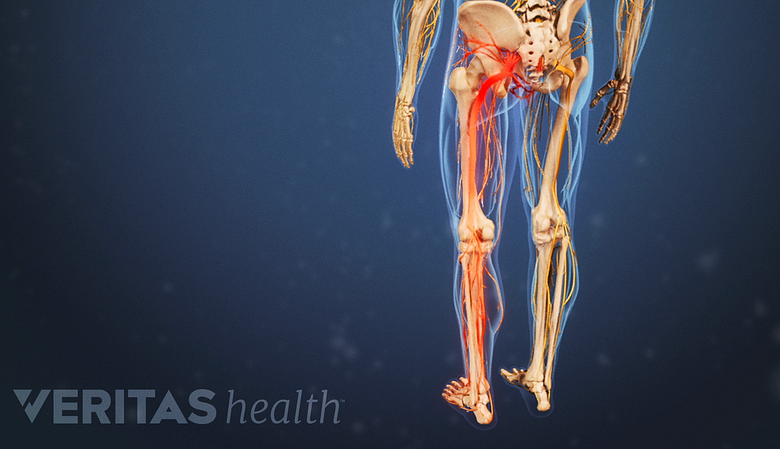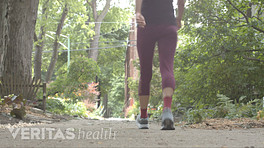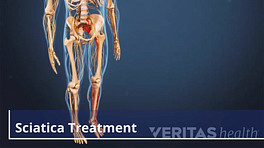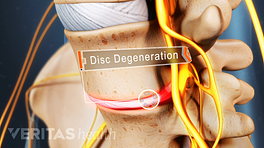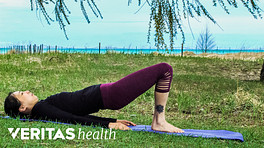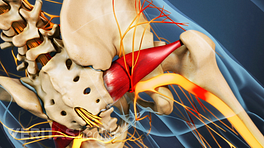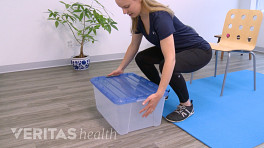Walking is surprisingly effective for relieving sciatica pain because regular walking spurs the release of pain-fighting endorphins and reduces inflammation. 1 Lee JS, Kang SJ. The effects of strength exercise and walking on lumbar function, pain level, and body composition in chronic back pain patients. J Exerc Rehabil. 2016;12(5):463-470. http://doi.org/10.12965/jer.1632650.325.
However, walking without the right technique elevates pressure on the spinal structures surrounding the sciatic nerve, possibly leading to increased pain. 2 Fernandez M, Hartvigsen J, Ferreira ML, Refshauge KM, Machado AF, Lemes ÍR, Maher CG, Ferreira PH. Advice to Stay Active or Structured Exercise in the Management of Sciatica. Spine. 2015;40(18):1457-66. http://doi.org/10.1097/BRS.0000000000001036
In This Blog:
As a Physical Medicine and Rehabilitation physician, here is the advice I give to patients to enjoy the benefits of walking without aggravating sciatica symptoms:
Tip #1: Shorten your stride
Optimizing the length of your stride while walking protects the sensitive sciatic nerve.
- Land between your midfoot and heel. Avoid reaching with your toes when taking a step. Instead, land between your midfoot and heel, gently rolling onto your toes before pushing off into the next stride. This initial foot contact naturally shortens your stride, reducing stress on your sciatic nerve.
- Slow down your pace. A slower walking pace typically means shorter steps. Aim to walk at a pace where you are able to comfortably maintain a conversation.
Walking with a shorter stride synchronizes core, abdominal, back, hip, and leg muscles to reduce spinal stress. 1 Lee JS, Kang SJ. The effects of strength exercise and walking on lumbar function, pain level, and body composition in chronic back pain patients. J Exerc Rehabil. 2016;12(5):463-470. http://doi.org/10.12965/jer.1632650.325.
Tip #2: Engage your core muscles
Engaging the core muscles helps maintain focused breathing and prevents slouching while walking.
Reduce pressure on the spine by engaging the core muscles – your abs and back muscles – with the following steps 1 Lee JS, Kang SJ. The effects of strength exercise and walking on lumbar function, pain level, and body composition in chronic back pain patients. J Exerc Rehabil. 2016;12(5):463-470. http://doi.org/10.12965/jer.1632650.325. :
- Stand upright. Keep your head up, chest out, and shoulders relaxed while focusing on a spot in the distance. Imagine a string pulling you up from the top of your head and elongating your spine.
- Avoid slouching. If your sciatica stems from a lumbar herniated disc, bending forward increases stress on the disc, typically increasing irritation and/or compression of the sciatic nerve.
- Focus on your breathing. Engage your core by taking deep breaths through your nose and exhaling slowly out through your mouth, ensuring your exhale lasts twice as long as your inhale. Focused breathing makes it easier to keep your shoulders and chest relaxed.
- Tuck in your stomach. Gently pull your stomach in towards your body and maintain a comfortable pace. Walking too fast hinders engaging your abs, while over-tightening creates discomfort.
Improving your posture while walking reduces the severity and frequency of sciatica flare-ups. Additionally, walking gradually strengthens your abdominal and core muscles, resulting in an overall improvement in your posture. 3 Gordon R, Bloxham S. A Systematic Review of the Effects of Exercise and Physical Activity on Non-Specific Chronic Low Back Pain. Healthcare (Basel). 2016;4(2):22. http://doi.org/10.3390/healthcare4020022
Simple ways to improve your walking routine
Hamstring stretches ease hamstring and hip flexor tightness, relieving lower back and sciatica pain.
Improve your overall walking experience by including one or more of the following tips:
- Stretch your hamstring before walking. Gentle stretching relieves tight hamstring and hip flexor muscles that typically contribute to lower back and sciatica pain. 2 Fernandez M, Hartvigsen J, Ferreira ML, Refshauge KM, Machado AF, Lemes ÍR, Maher CG, Ferreira PH. Advice to Stay Active or Structured Exercise in the Management of Sciatica. Spine. 2015;40(18):1457-66. http://doi.org/10.1097/BRS.0000000000001036
- Use supportive shoes or orthotic inserts. Choose shoes that fit correctly – or consider using orthotic inserts – that offer ample arch support, cushioning, and stability to reduce the impact on the body. 4 Cambron JA, Dexheimer JM, Duarte M, Freels S. Shoe orthotics for the treatment of chronic low back pain: a randomized controlled trial. Arch Phys Med Rehabil. 2017;98(9):1752-1762. http://doi.org/10.1016/j.apmr.2017.03.028
- Take breaks and perform breathing exercises. Sit down for a few minutes and take deep breaths. A slow, rhythmic inhale-exhale exercise reduces stress, improves attention, and releases endorphins, our body’s natural pain-relieving hormones. 5 Nguyen JD, Duong H. Pursed-lip Breathing. [Updated 2022 Jul 25]. In: StatPearls [Internet]. Treasure Island (FL): StatPearls Publishing; 2023 Jan-. Available from: https://www.ncbi.nlm.nih.gov/books/NBK545289/
- Avoid walking on uneven surfaces. Walking on uneven terrain aggravates sciatica by adding extra stress on the lower back and hips, which shifts the alignment of the spine and pelvis and affects posture. 2 Fernandez M, Hartvigsen J, Ferreira ML, Refshauge KM, Machado AF, Lemes ÍR, Maher CG, Ferreira PH. Advice to Stay Active or Structured Exercise in the Management of Sciatica. Spine. 2015;40(18):1457-66. http://doi.org/10.1097/BRS.0000000000001036
- Use heat therapy before exercise. Apply heat to the low back area to relax tight muscles and improve blood circulation. 6 Malanga GA, Yan N, Stark J. Mechanisms and efficacy of heat and cold therapies for musculoskeletal injury. Postgraduate Medicine. 2014;127(1):57-65. http://doi.org/10.1080/00325481.2015.992719
- Use cold therapy after exercise. Apply a cold pack after exercising to numb and reduce swelling.6
See Cold and Heat Therapy for Sciatica
While walking or performing any exercise, understand your pain limits and pay close attention to your body. Stop any activity that causes or aggravates your pain.
When not to walk with sciatica
Worsening weakness and numbness in the leg warrant immediate medical attention.
If you experience any of the following warning signs, it's best to consult a physician and refrain from walking until your condition improves:
- Acute sciatica flare-up. When experiencing an acute flare-up of sciatica pain, walking can exacerbate your symptoms. It is important to avoid walking until the pain diminishes. 7 Davis D, Maini K, Vasudevan A. Sciatica. [Updated 2022 May 6]. In: StatPearls [Internet]. Treasure Island (FL): StatPearls Publishing; 2023 Jan-. Available from: https://www.ncbi.nlm.nih.gov/books/NBK507908/
- Swelling or redness. Noticeable changes in the color and/or appearance of skin over the buttock, hip, or thigh. 7 Davis D, Maini K, Vasudevan A. Sciatica. [Updated 2022 May 6]. In: StatPearls [Internet]. Treasure Island (FL): StatPearls Publishing; 2023 Jan-. Available from: https://www.ncbi.nlm.nih.gov/books/NBK507908/
- Fever. Sudden high-grade fever or a persistent low-grade fever accompanied by increased severity of sciatica symptoms. 7 Davis D, Maini K, Vasudevan A. Sciatica. [Updated 2022 May 6]. In: StatPearls [Internet]. Treasure Island (FL): StatPearls Publishing; 2023 Jan-. Available from: https://www.ncbi.nlm.nih.gov/books/NBK507908/
- Loss of bowel and bladder control. Sciatica symptoms accompanied by incontinence, such as difficulty passing urine, reduced urinary sensation, or loss of bowel control, require prompt medical attention.
- Worsening weakness or numbness in the leg. Progressive neurological impairments generally warrant immediate medical attention. 8 Fairbank J, Mallen C. Cauda equina syndrome: implications for primary care. Br J Gen Pract. 2014;64(619):67–68. http://doi.org/10.3399/bjgp14X676988
- Signs of foot drop. Having difficulty lifting the front part of your foot and dragging it on the ground while walking – called foot drop – should be evaluated by a physician.
It is always better to be safe than sorry, so do not hesitate to seek medical advice if you are concerned about these or any other symptoms.
Lower-impact alternatives that are gentle for sciatica
There is a range of exercise options that are lower impact than walking, such as:
- Swimming. Swimming is a full-body workout that strengthens your core muscles, improves flexibility, and boosts cardiovascular health. 9 Verhagen AP, Cardoso JR, Bierma-Zeinstra S. Aquatic exercise & balneotherapy in musculoskeletal conditions. Best Practice & Research Clinical Rheumatology. 2012;26(3):335-343. https://doi.org/10.1016/j.berh.2012.05.008 The buoyancy of water supports your weight, reducing the stress on your joints and spine.
- Water therapy. Exercising in a pool with warm water allows the water’s buoyancy to support the weight of your body, while the water's resistance helps strengthen muscles without using weights. 9 Verhagen AP, Cardoso JR, Bierma-Zeinstra S. Aquatic exercise & balneotherapy in musculoskeletal conditions. Best Practice & Research Clinical Rheumatology. 2012;26(3):335-343. https://doi.org/10.1016/j.berh.2012.05.008 This combination alleviates stress on your spinal structures and sciatic nerve, safely building muscle strength.
- Stationary bike. Biking is generally low impact on your spine, and using a stationary bike allows you to control the pace and resistance, making it suitable for people of different fitness levels.
- Elliptical trainer. Elliptical trainers provide smooth, low-impact motion that imitates walking and running. The smooth motion does not stress your joints and targets multiple muscle groups, including the buttock muscles, hamstrings, and quadriceps, without putting too much pressure on your back. 10 Chan CW, Mok NW, Yeung EW. Aerobic exercise training in addition to conventional physiotherapy for chronic low back pain: a randomized controlled trial. Arch Phys Med Rehabil. 2011;92(10):1681-1685. http://doi.org/10.1016/j.apmr.2011.05.003
- Yoga. Yoga promotes flexibility, strength, and balance without jarring the sciatic nerve. Gentle yoga poses can help stretch the sciatic nerve and reduce pain.
Whenever possible, seek expert medical help from a physiatrist, physical therapist, or chiropractor if you need more guidance on what alternative is the best for you.
Learn more:
- 1 Lee JS, Kang SJ. The effects of strength exercise and walking on lumbar function, pain level, and body composition in chronic back pain patients. J Exerc Rehabil. 2016;12(5):463-470. http://doi.org/10.12965/jer.1632650.325.
- 2 Fernandez M, Hartvigsen J, Ferreira ML, Refshauge KM, Machado AF, Lemes ÍR, Maher CG, Ferreira PH. Advice to Stay Active or Structured Exercise in the Management of Sciatica. Spine. 2015;40(18):1457-66. http://doi.org/10.1097/BRS.0000000000001036
- 3 Gordon R, Bloxham S. A Systematic Review of the Effects of Exercise and Physical Activity on Non-Specific Chronic Low Back Pain. Healthcare (Basel). 2016;4(2):22. http://doi.org/10.3390/healthcare4020022
- 4 Cambron JA, Dexheimer JM, Duarte M, Freels S. Shoe orthotics for the treatment of chronic low back pain: a randomized controlled trial. Arch Phys Med Rehabil. 2017;98(9):1752-1762. http://doi.org/10.1016/j.apmr.2017.03.028
- 5 Nguyen JD, Duong H. Pursed-lip Breathing. [Updated 2022 Jul 25]. In: StatPearls [Internet]. Treasure Island (FL): StatPearls Publishing; 2023 Jan-. Available from: https://www.ncbi.nlm.nih.gov/books/NBK545289/
- 6 Malanga GA, Yan N, Stark J. Mechanisms and efficacy of heat and cold therapies for musculoskeletal injury. Postgraduate Medicine. 2014;127(1):57-65. http://doi.org/10.1080/00325481.2015.992719
- 7 Davis D, Maini K, Vasudevan A. Sciatica. [Updated 2022 May 6]. In: StatPearls [Internet]. Treasure Island (FL): StatPearls Publishing; 2023 Jan-. Available from: https://www.ncbi.nlm.nih.gov/books/NBK507908/
- 8 Fairbank J, Mallen C. Cauda equina syndrome: implications for primary care. Br J Gen Pract. 2014;64(619):67–68. http://doi.org/10.3399/bjgp14X676988
- 9 Verhagen AP, Cardoso JR, Bierma-Zeinstra S. Aquatic exercise & balneotherapy in musculoskeletal conditions. Best Practice & Research Clinical Rheumatology. 2012;26(3):335-343. https://doi.org/10.1016/j.berh.2012.05.008
- 10 Chan CW, Mok NW, Yeung EW. Aerobic exercise training in addition to conventional physiotherapy for chronic low back pain: a randomized controlled trial. Arch Phys Med Rehabil. 2011;92(10):1681-1685. http://doi.org/10.1016/j.apmr.2011.05.003

